The Misrepresentation of Autism in Media: A Call for Authentic Portrayal
Autism spectrum disorder (ASD) is a complex neurodevelopmental condition that affects communication, behavior, and social interaction in various ways. Despite the growing awareness and understanding of autism, mainstream media often falls short in portraying the nuanced realities of the condition, leading to misrepresentation and perpetuation of stereotypes.
One of the most significant issues with media representation of autism is the tendency to focus on extreme stereotypes. This often manifests in the portrayal of individuals with autism as either savants with extraordinary abilities or as individuals who are completely unable to function independently. Such portrayals are not only inaccurate but also contribute to a narrow public perception of the spectrum of autism, ignoring the vast majority who fall in between these extremes.
Another common issue is the negative and medicalized language used in media, which emphasizes deficits rather than strengths or individuality. Studies have shown that newspapers, in particular, often present autistic individuals as lacking agency or voice, reinforcing a view of autism as a condition from which one suffers, rather than a part of one’s identity. This can have a profound impact on public attitudes, potentially strengthening barriers to social integration for autistic individuals.
The lack of representation of autistic voices in media production is also problematic. Without the inclusion of experts by experience, media narratives are likely to miss the authenticity and diversity of the autistic community. A scoping review suggests that involving autistic individuals in the content creation process could lead to more diverse and positive representations, especially in literature and social media, where self-representation is more prevalent.
Furthermore, the media’s focus on adversities associated with autism, often using negative language, can contribute to stigma and misunderstandings. It is crucial for media outlets to consider the impact of their words and portrayals on the mental health and social acceptance of autistic individuals.
To address these issues, it is essential for media creators to engage with the autistic community, seek out a variety of voices and experiences, and strive for portrayals that reflect the true diversity of the autism spectrum. By doing so, media can play a pivotal role in educating the public, dispelling misconceptions, and promoting a more inclusive society.
In conclusion, the misrepresentation of autism in media is a multifaceted issue that requires a concerted effort to rectify. It is a call to action for media professionals to prioritize accuracy, inclusivity, and respect in their portrayals of autism, ensuring that all individuals on the spectrum are represented fairly and authentically.
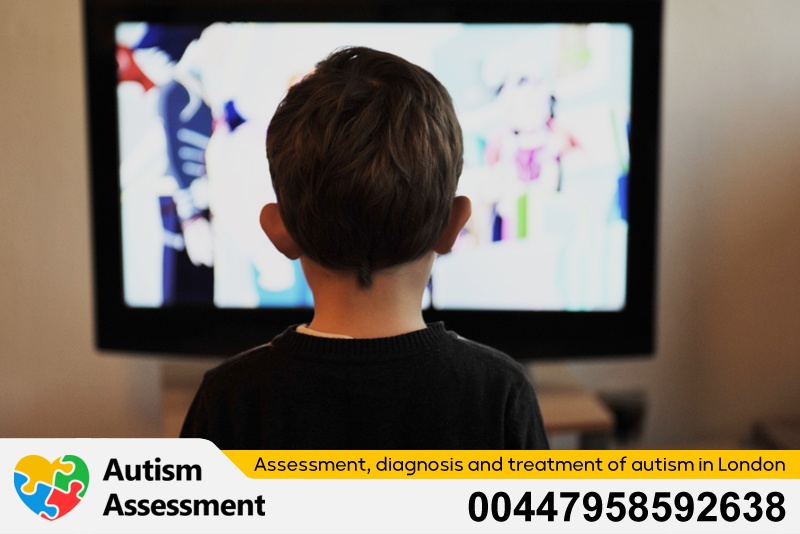
Give examples of how autism can be misrepresented in the media?
Autism Misrepresentation in Media: A Critical Overview
Autism spectrum disorder (ASD) is a complex developmental condition that involves persistent challenges in social interaction, speech and nonverbal communication, and restricted/repetitive behaviors. The effects of ASD and the severity of symptoms are different in each person. However, media portrayals often fail to reflect this diversity, leading to widespread misrepresentation.
One of the most common misrepresentations is the ‘savant stereotype,’ where autistic characters are depicted as possessing extraordinary talents or intellectual abilities, especially in fields like mathematics or music. This portrayal can be seen in films such as “Rain Man” and TV shows like “The Big Bang Theory” and “The Good Doctor.” While savant skills do occur in some individuals with autism, they are not as common as media depictions might suggest.
Another significant issue is the overemphasis on behavioral problems. Media often portray individuals with autism as being prone to dramatic meltdowns or violent outbursts, which can perpetuate a narrative of autistic individuals as unstable or dangerous. This not only stigmatizes those with autism but also overlooks the wide range of behaviors and experiences of autistic individuals.
The media also tends to present misleading explanations and remedies for autism, sometimes portraying it as a tragedy that must be overcome. This narrative can be harmful, as it suggests that autism is something that needs to be fixed, rather than a part of an individual’s identity that should be accepted and accommodated.
Furthermore, there is a lack of diverse representation. Autistic characters are frequently white males, which does not reflect the true diversity of the autism community. This can lead to the misconception that autism is a “white person’s condition,” potentially discouraging people of color from seeking diagnosis or support.
In addition, autistic characters are often used as inspirational figures for non-autistic characters, a trope known as ‘inspiration porn.’ This portrayal objectifies autistic individuals, using their experiences to make non-disabled audiences feel better about their own lives, rather than presenting autistic characters as fully realized individuals.
Lastly, there is often an overemphasis on diagnosis and labels, with autistic characters defined solely by their autism, rather than as people with their own personalities, desires, and stories. This one-dimensional approach fails to acknowledge the complexity of autistic individuals and their lives.
In conclusion, the media has a powerful influence on public perception and understanding of autism. It is crucial for creators to strive for accurate, respectful, and diverse representations of autism, involving autistic voices in the creative process. By doing so, media can play a role in promoting understanding and acceptance of autistic individuals in society.
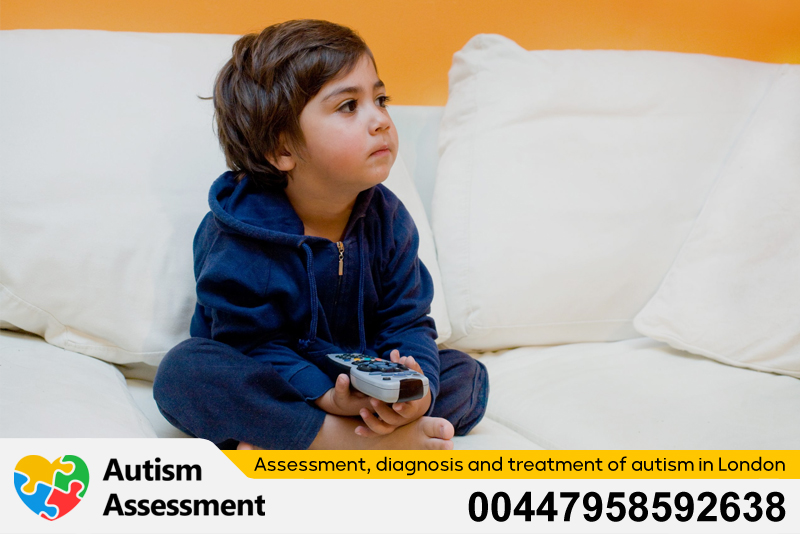
How does autism get misrepresented in the media?
Autism and Media Representation: A Critical Examination
Autism spectrum disorder (ASD) is a complex neurodevelopmental condition that affects communication, behavior, and social interaction in various ways. Despite its prevalence and the growing awareness about it, autism is often subject to misrepresentation in the media. This blog post aims to critically examine how autism is portrayed in media and the implications of these portrayals.
Historical Context of Autism in Media
The portrayal of autism in media has evolved over time. Initially, characters with autism were depicted as aloof, distant, and sometimes mentally incapable, showing only one dimension of autism. This narrow representation failed to capture the diversity and complexity of the autism spectrum. In some instances, autistic characters were used for comedic relief, turning autism into a punchline for audiences to laugh at.
Modern Portrayals and Their Shortcomings
In recent years, there has been an increase in the presence of neurodivergent characters in television and film. However, whether these depictions are accurate is debatable. For instance, characters on the autism spectrum are often portrayed as having extraordinary abilities, such as a high IQ or photographic memory, which can be misleading and contribute to the ‘savant’ stereotype.
Moreover, the media frequently portrays autistic individuals as white males, which is unrepresentative of the actual diversity within the autism community. This skewed representation can have real-life effects, such as discouraging people of color from seeking support or perpetuating the misconception that autism is a “white person’s condition”.
The Issue of ‘Inspiration Porn’
Another problematic aspect of autism representation in media is the concept of ‘inspiration porn.’ This term refers to the portrayal of disabled individuals in a way that objectifies them for the benefit of non-disabled people. Autistic characters are often depicted less as independent, autonomous individuals and more as tools to inspire those around them. This reinforces the notion that having autism is a negative experience that limits people, an obstacle that needs to be overcome.
The Impact of Misrepresentation
The misrepresentation of autism in the media can lead to misconceptions, stereotypes, and stigma. It can contribute to discrimination and a lack of understanding about the condition. Accurate representation matters because it influences public perception and can affect the lives of autistic individuals and their families.
Moving Forward: The Need for Authentic Representation
To address these issues, it is crucial for media creators to engage with the autism community and portray the condition with authenticity and complexity. This involves showing a range of experiences and avoiding stereotypes. It also means including autistic individuals in the creative process, from writing to acting.
Authentic representation can foster a better understanding of autism, promote acceptance, and empower autistic individuals by reflecting their experiences accurately. It can also help dismantle harmful myths and encourage a more inclusive society.
The way autism is represented in the media has significant implications for how society views and treats autistic individuals. While there have been improvements in representation, there is still much work to be done to ensure that media portrayals are diverse, accurate, and respectful. By critically examining and challenging misrepresentations, we can move towards a more inclusive and understanding portrayal of autism in media.

What are the stereotypes of autistic people in the media?
Autism Spectrum Disorder (ASD) is a complex developmental condition that involves persistent challenges in social interaction, speech and nonverbal communication, and restricted/repetitive behaviors. The effects of ASD and the severity of symptoms are different in each person. However, one thing that is unfortunately common is the prevalence of stereotypes about autistic individuals in media representations.
The media has a powerful influence on public perception, and the way autistic people are portrayed can significantly impact societal attitudes and beliefs. Stereotypes in the media often arise from a lack of understanding and an over-reliance on generalizations. Some common stereotypes include:
1. The Savant: This stereotype portrays autistic individuals as possessing extraordinary skills or intelligence in specific areas, such as mathematics or memory. While it’s true that some autistic people may have remarkable abilities, this is not the case for everyone with autism. This stereotype can lead to unrealistic expectations and pressures on autistic individuals.
2. The Socially Awkward Genius: Often, characters in media who are depicted as autistic are shown to have high intelligence but poor social skills. This can perpetuate the misconception that all autistic individuals have similar traits and ignore the vast diversity within the autism spectrum.
3. The Childlike Adult: Autistic adults are sometimes portrayed as naive or perpetually childlike, which diminishes their autonomy and overlooks their capacity for growth and learning. This stereotype fails to recognize the full range of experiences and abilities of autistic adults.
4. The Emotionless Individual: Some portrayals suggest that autistic people lack emotions or empathy. This is far from the truth; autistic individuals can and do experience a full range of emotions but may express them differently than neurotypical people.
5. The Burden: Media narratives sometimes focus on the challenges faced by families of autistic individuals, framing autism as a tragedy or burden. This perspective can be harmful and fails to acknowledge the value and contributions of autistic people.
It’s important to challenge these stereotypes and strive for more accurate, respectful, and diverse representations of autistic individuals in the media. By doing so, we can foster a more inclusive society that recognizes and appreciates the unique strengths and challenges of autistic people.
For a more comprehensive understanding of autism and to move beyond stereotypes, it is crucial to listen to the voices of autistic individuals and those with lived experiences. Their stories and perspectives are invaluable in breaking down misconceptions and building a more accepting world.

Outline the key points of current legislation and guidance in relation to autism
Understanding the Legislative Landscape: Autism Policy and Guidance
Autism, a complex neurodevelopmental condition, has seen a significant evolution in the legislative framework that supports individuals with autism spectrum disorder (ASD). This blog post outlines the key points of current legislation and guidance related to autism, reflecting a commitment to enhancing the lives of those affected by ASD.
The Autism CARES Act of 2019
The Autism Collaboration, Accountability, Research, Education, and Support (CARES) Act of 2019 is a pivotal piece of legislation in the United States. It reauthorizes and expands upon the provisions first introduced in the Combating Autism Act of 2006. The Autism CARES Act ensures continued support for research, services, prevalence tracking, and other government activities related to autism.
Key provisions of the Autism CARES Act include:
- An increase in the annual authorized federal spending on autism efforts to $369.7 million through 2024.
- An expanded focus of government activities to encompass the entire lifespan of individuals on the autism spectrum.
- A requirement for a report to Congress on the health and well-being of individuals with ASD.
The Autism Act 2009
In the United Kingdom, the Autism Act 2009 focuses on improving public services for autistic adults. It mandates the government to introduce and periodically review an adult autism strategy. The Act places a legal responsibility on local authorities to provide social care assessments for every autistic person within their jurisdiction.
The Equality Act 2010
The Equality Act 2010 is a comprehensive UK law that prevents discrimination based on various characteristics, including disability. Under this Act, individuals with autism are protected from unfair treatment and discrimination, as the government recognizes autism as a disability within the context of the Act.
The Human Rights Act 1998
Also in the UK, the Human Rights Act 1998 sets out freedoms and liberties that apply to all individuals, including those with autism. This Act ensures the right to life, liberty, and the right to be free from inhuman and degrading treatment, among other rights.
National Strategies and Reports
Governments often release national strategies and reports that provide comprehensive approaches to improve the lives of individuals with ASD. These documents outline policies, programs, and plans that aim to address the needs of autistic individuals and their families.
Legislation and guidance related to autism have made strides in recognizing the unique needs of individuals with ASD. These laws and policies are crucial in ensuring that individuals with autism receive the support and protection they deserve. As society continues to evolve, it is imperative that legislation keeps pace, adapting to new understandings and approaches to autism.

Examples of autism in the media
The portrayal of autism in media has undergone significant evolution over the years. From early depictions that often perpetuated stereotypes to more recent nuanced and authentic portrayals, the media’s approach to representing individuals on the autism spectrum has been a journey of learning and adaptation.
In the early days, characters with autism were scarce and, when present, were often depicted in a one-dimensional manner. The 1970s saw autistic characters portrayed as aloof, distant, or used for comedic relief, which did not reflect the complexity of the condition.
However, the landscape began to change as awareness and understanding of autism spectrum disorder (ASD) grew. ASD is a neurological and developmental disorder that affects how people interact with others, communicate, learn, and behave. It’s important to note that autism is a spectrum, with a range of manifestations and severities.
Recent media portrayals have made strides in presenting characters with autism in a more realistic and respectful light. Shows like “The Good Doctor,” “Atypical,” and “Parenthood” have introduced characters on the spectrum with depth and individuality. Animated series like “Arthur” and “Pablo” have also contributed to a deeper understanding of autism by showcasing diverse experiences and challenges faced by individuals with ASD.
One notable example is the Netflix series “Extraordinary Attorney Woo,” which features Woo Youngwoo, an attorney on the autistic spectrum. The show presents her as a capable and intelligent individual who uses her unique perspective to solve cases, challenging the stereotype that autism is a hindrance to professional success.
Despite these positive developments, challenges remain in the representation of autism in media. There is a tendency to portray autistic individuals as predominantly white males, which does not reflect the true diversity of the autism community. This skewed representation can have real-life implications, such as discouraging people of color from seeking support or perpetuating the myth that autism is a “white person’s condition”.
Moreover, the media often falls into the trap of “inspiration porn,” where autistic characters are used to inspire non-autistic individuals, rather than being presented as autonomous individuals with their own stories and achievements. This can inadvertently reinforce the notion that having autism is a negative experience that must be overcome.
In conclusion, while the representation of autism in media has come a long waay, there is still room for improvement. Authentic and diverse portrayals are crucial for fostering a more inclusive society that recognizes and values the contributions of individuals with autism. As media continues to evolve, it holds the power to shape perceptions and attitudes towards autism, making it imperative that it does so with sensitivity and accuracy.

Inadvertent discrimination autism
Autism, a complex neurodevelopmental condition, is often misunderstood in society. This lack of understanding can lead to inadvertent discrimination, which occurs when individuals with autism are unfairly treated without the intention to harm. Such discrimination can manifest in various aspects of life, including employment, education, and social interactions, and it stems from a myriad of factors, including unintentional bias, systemic barriers, and a general lack of awareness.
The workplace is one of the primary environments where inadvertent discrimination can have profound effects. Employers may unknowingly discriminate against autistic individuals by adhering to ‘neurotypical’ standards of interaction, which do not accommodate the unique ways in which autistic people experience the world. This can lead to significant employment disparities, with only 16% of autistic adults in full-time work, despite a majority expressing a desire to work. The social intricacies of job interviews and networking pose considerable challenges for those with autism, who may struggle with social cues that are often critical for first impressions.
Moreover, professional relationships can be difficult to navigate for autistic individuals due to the ‘double empathy problem,’ where misunderstandings arise not just from the autistic person’s perspective but also from neurotypical individuals misinterpreting autistic behaviors. These challenges highlight the need for a shift in perspective, where employers and colleagues look beyond surface-level social cues and appreciate the diverse ways in which meaningful interaction can occur.
Education is another area where inadvertent discrimination can significantly impact individuals with autism. A lack of appropriate support in schools and colleges can hinder the educational development and future opportunities for autistic students. This can result from a misunderstanding of their needs or the absence of tailored educational strategies that cater to their learning styles.
In social settings, inadvertent discrimination can lead to isolation and exclusion. Autistic individuals might be misunderstood due to their unique communication styles or sensory preferences, which can be misinterpreted as disinterest or aloofness. This can prevent the formation of meaningful social connections and contribute to a sense of loneliness.
Addressing inadvertent discrimination requires a concerted effort to increase public understanding of autism. It involves educating employers, educators, and the general public about the condition and promoting inclusive practices that accommodate the diverse needs of autistic individuals. It also calls for advocacy and support from allies who can help amplify the voices of those with autism and push for systemic changes that foster inclusivity.
In conclusion, inadvertent discrimination against individuals with autism is a pervasive issue that demands attention. By raising awareness and advocating for change, we can create a more inclusive society that recognizes and values the contributions of autistic individuals. It is not only a matter of equity but also a step towards harnessing the unique talents and perspectives that neurodiversity brings to our communities.
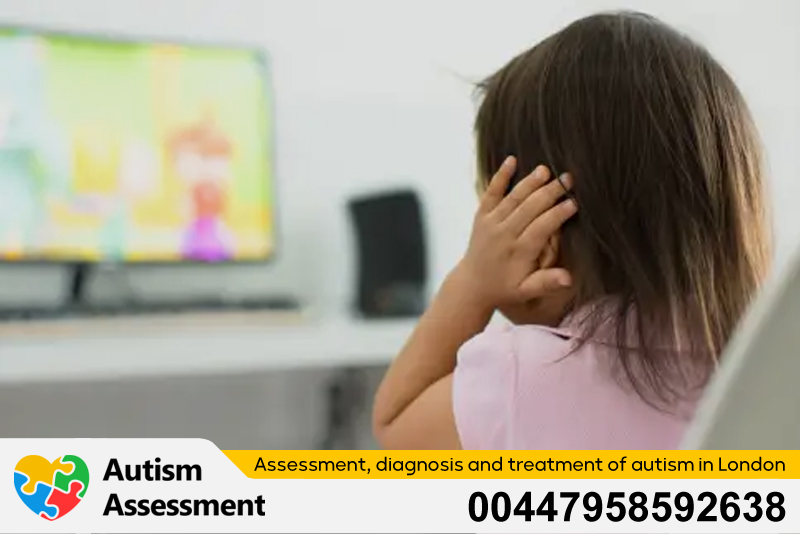
How is autism represented in society?
Autism Representation in Society: A Reflection on Media and Public Perception
Autism spectrum disorder (ASD) is a complex developmental condition that involves persistent challenges in social interaction, speech and nonverbal communication, and restricted/repetitive behaviors. The effects of ASD and the severity of symptoms are different in each person. This diversity is often not reflected in societal representation, where the portrayal of autism can be narrow and stereotypical.
The media plays a significant role in shaping public perception of autism. Historically, portrayals of autism in media have been criticized for being one-dimensional, often focusing on savant abilities or depicting autistic individuals as socially inept. Such representations can lead to misconceptions and reinforce stereotypes that do not reflect the true diversity of the autistic community.
In recent years, there has been a shift towards more nuanced and authentic portrayals. Shows like “Extraordinary Attorney Woo” have been praised for presenting an autistic character as a competent professional, using her unique perspective to solve complex legal cases. This is a step forward in showcasing the capabilities and contributions of autistic individuals beyond the stereotypes.
However, challenges remain. The media often depicts autistic characters as white males, ignoring the fact that autism affects people of all races, genders, and backgrounds. This lack of diversity in representation can have real-world implications, potentially discouraging people of color from seeking diagnosis and support due to the misconception of autism as a “white person’s condition”.
Furthermore, the concept of “inspiration porn” can be problematic, where autistic individuals are portrayed in a way that objectifies them for the benefit of non-disabled people. This portrayal can trivialize the experiences of autistic people, suggesting that their value lies in their ability to inspire others rather than in their inherent worth as individuals.
Authentic representation matters. When autistic characters are portrayed in a diverse and realistic manner, it fosters a better understanding of autism in society. This can lead to safer environments for autistic people to “come out” and live authentically, allowing them to flourish.
In conclusion, while strides have been made in the representation of autism in society, there is still work to be done. Media portrayals need to continue evolving to reflect the true diversity of the autistic community, avoiding stereotypes and embracing the multifaceted nature of autism. By doing so, society can move towards a more inclusive and accurate understanding of ASD, benefiting everyone involved.
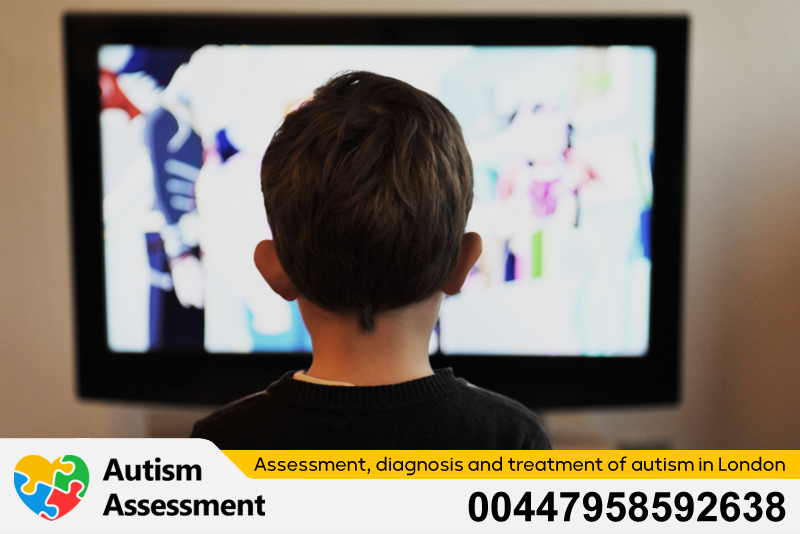
Do autistic people like social media?
The Relationship Between Autism and Social Media: A Complex Landscape
Social media has become an integral part of modern life, offering a platform for communication, self-expression, and community building. For autistic individuals, the relationship with social media can be particularly nuanced, presenting both opportunities and challenges.
Autism, a neurodevelopmental condition characterized by differences in social communication and interaction, affects individuals in diverse ways. While some autistic people may find social media to be a comfortable space for interaction, others may encounter difficulties or have mixed feelings about its use.
Benefits of Social Media for Autistic Individuals
Research indicates that social media can provide several advantages for autistic people. A study from 2017 found that social media was linked to high-quality friendships among autistic adolescents, suggesting that the online environment requires less interpretation of complex social cues. Additionally, a 2018 study associated Facebook use with increased happiness in autistic adults.
Social media platforms can offer a sense of control over social interactions that is not always possible in face-to-face settings. The absence of nonverbal cues, such as eye contact and body language, can reduce the stress associated with communication for some autistic individuals. Moreover, the asynchronous nature of social media allows for more time to process and respond to social information, which can be beneficial for those who need additional time to understand and formulate their thoughts.
The online world also provides access to communities of like-minded individuals, where autistic people can find support, share experiences, and foster a stronger sense of identity within the autism community. These virtual spaces can be particularly valuable for those who feel isolated or misunderstood in their offline lives.
Challenges and Considerations
Despite the potential benefits, social media is not without its drawbacks. The unwritten rules and etiquette of online interactions can be just as complex and confusing as those in the physical world. Misunderstandings and conflicts can arise, and the risk of cyberbullying or exposure to inappropriate content is a concern for all users, including autistic individuals.
Furthermore, while social media can facilitate connections, it does not always satisfy the desire for in-person relationships. Some autistic people may continue to feel lonely or crave more tangible forms of social interaction, despite having online friendships.
Navigating the Digital Landscape
For autistic individuals and their families, it is important to navigate social media with awareness and caution. Setting boundaries, understanding privacy settings, and learning about online safety are crucial steps in creating a positive social media experience.
Professionals and caregivers can play a role in supporting autistic people by providing guidance on how to use social media effectively and safely. This includes helping them to recognize and manage the challenges they may face online.
The relationship between autism and social media is complex and individualized. While social media can be a valuable tool for building connections and finding support, it is essential to approach its use thoughtfully and with an understanding of the unique experiences of autistic individuals. As research continues to explore this relationship, it is hoped that more insights will emerge to help autistic people maximize the benefits of social media while minimizing its challenges.
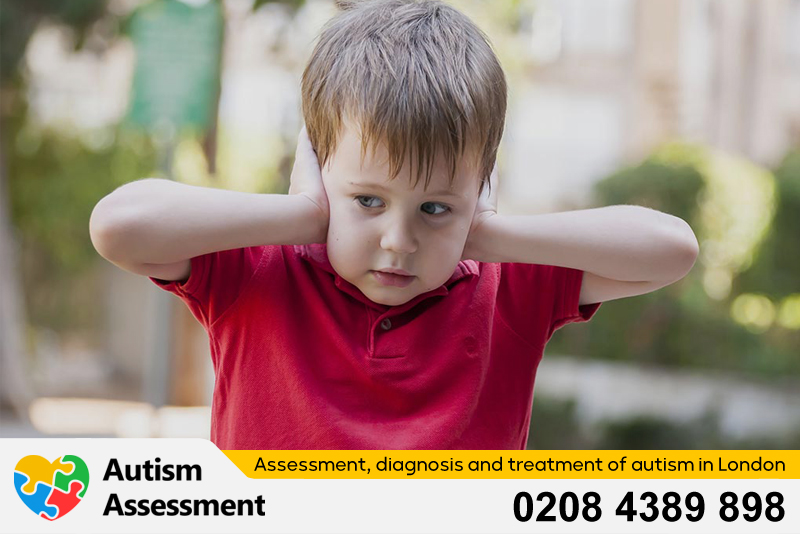
Describe how discrimination against individuals with autism can occur inadvertently in society
Understanding Inadvertent Discrimination Against Individuals with Autism
In a society that prides itself on diversity and inclusion, it’s disheartening to acknowledge that discrimination against individuals with autism can, and does, occur inadvertently. This form of discrimination is not always the result of intentional bias or malice but often stems from a lack of awareness, understanding, and systemic barriers that fail to accommodate the unique needs of autistic individuals.
One of the most pervasive forms of inadvertent discrimination arises from misinterpretation of behavior. Autistic individuals may communicate or behave in ways that are not typically expected—avoiding eye contact, displaying a monotone voice, or not picking up on social cues. These differences can be mistakenly perceived as rudeness, disinterest, or a lack of engagement.
In educational settings, inadvertent discrimination can manifest through inadequate support for autistic students. Schools may lack the resources or trained staff to provide effective support, leading to challenges in educational progress and social integration. Mainstreaming without adequate support can result in bullying, isolation, and an educational experience that fails to cater to the learning needs of autistic students.
The workplace presents another arena where inadvertent discrimination is prevalent. Standardized interview techniques that emphasize social interaction can inadvertently disadvantage autistic individuals. Furthermore, workplaces often overlook the need for environmental adjustments to accommodate sensory sensitivities, which can significantly impact an autistic individual’s ability to perform and thrive in their role.
Public services and community activities are not immune to these issues. The stigma surrounding autism can lead to exclusion from social activities and public services, often because others may not understand the unique communication styles or behaviors of autistic individuals. This can exacerbate feelings of isolation and hinder the full participation of autistic individuals in society.
To combat inadvertent discrimination, it is crucial to foster a culture of understanding and acceptance. This involves educating the public about autism, advocating for systemic changes to accommodate diverse needs, and actively working to include autistic individuals in all aspects of society. By doing so, we can move towards a truly inclusive community where every individual is valued and given the opportunity to succeed.
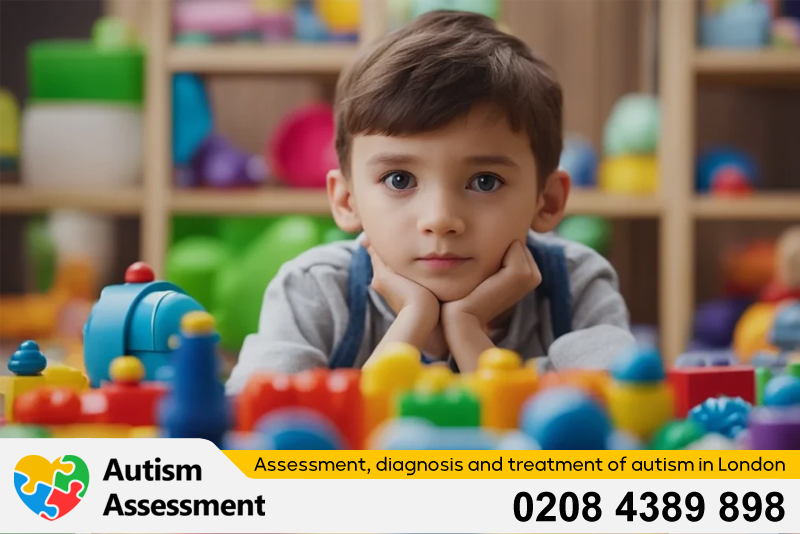
Autism in the media UK
The representation of autism in the UK media has been a topic of significant discussion and analysis. A recent study by Edge Hill University examined 24,000 newspaper articles from 10 national British papers over nearly a decade and found that the portrayal of autism remains skewed towards stereotypically negative views. This is concerning as the media plays a crucial role in shaping public perception and understanding of autism.
Autism, a neurodevelopmental condition characterized by diverse cognitive and social experiences, is often misrepresented in the media. The study highlighted that the press tends to emphasize ‘deficits’ and promote medicalized views of autism, frequently portraying it as a disorder primarily affecting boys and one from which individuals ‘suffer’. Such language and framing can reinforce stigma and barriers to social integration for autistic individuals.
The portrayal of autism in film has also come under scrutiny. For instance, the controversy surrounding the film “Music” directed by singer-songwriter Sia, brought to light the critical need for authentic representation of the autistic community in media. The film faced backlash for its portrayal of autism and the use of an actor who is not autistic to play an autistic character, among other issues.
On the other hand, there are examples of media that have been praised for their authentic and respectful representation of autism. “The Reason I Jump”, based on the memoir of non-verbal autistic author Naoki Higashida, has been acclaimed for its portrayal of the autistic experience, offering insights into the sensory and cognitive differences that characterize autism.
The media’s fascination with autism, from concerns about an ‘autism epidemic’ to the MMR vaccine crisis, has often led to sensationalized and stigmatizing narratives. However, there is a growing movement towards more nuanced and inclusive representations that reflect the neurodiversity paradigm. This approach recognizes the natural variation in human cognition and emphasizes the value of all forms of neurocognitive functioning.
It is essential for society to move beyond stereotypes and embrace a more comprehensive understanding of autism. By doing so, we can foster a more inclusive environment where autistic individuals are recognized for their unique contributions and are supported in overcoming the challenges they may face. The media has a responsibility to lead this change by ensuring that their portrayal of autism is informed, respectful, and aligned with the experiences of the autistic community.
For further reading on the portrayal of autism in mainstream media, you may refer to a scoping review that maps the characteristics and range of records describing the representation of autism across various media platforms. This review contributes to the literature on the stigmatizing effects of media portrayal and offers insights into how autism is represented in both fiction and non-fiction media.
In conclusion, the representation of autism in the UK media is a complex issue that requires ongoing attention and improvement. It is imperative that media professionals, content creators, and the public engage in informed discussions and advocate for portrayals that accurately reflect the diversity and richness of the autistic experience. Only through such efforts can we hope to achieve a society that truly values and includes all its members.
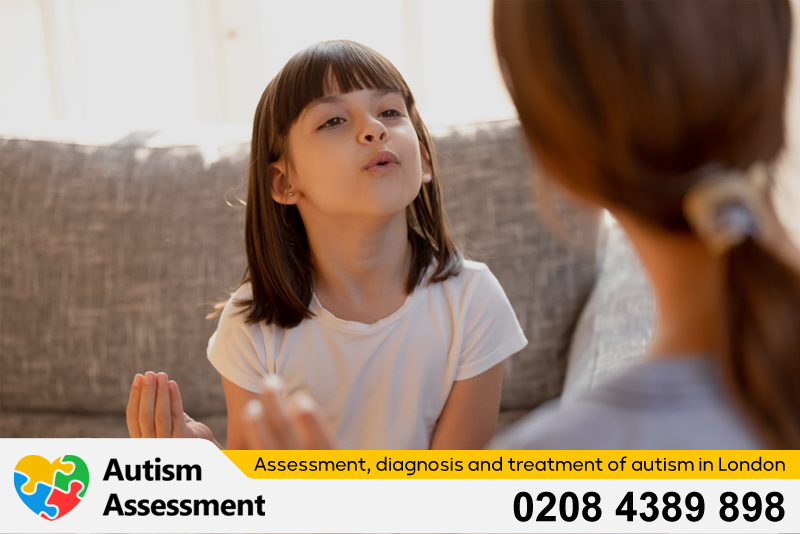
What is an example of unintentional discrimination autism?
Understanding Unintentional Discrimination Against Individuals with Autism
Unintentional discrimination against individuals with autism can manifest in various aspects of daily life, often due to a lack of awareness and understanding of the condition. Autism, a developmental disorder that affects communication and behavior, is not always immediately apparent to others, leading to inadvertent discriminatory practices.
One common example of unintentional discrimination occurs in the workplace. Employers may unknowingly discriminate against autistic individuals by adhering strictly to ‘neurotypical’ standards of interaction. For instance, a lack of eye contact or atypical social cues from an autistic employee during an interview may be misinterpreted as disinterest or incompetence, rather than recognized as characteristics of autism.
In educational settings, unintentional discrimination can arise when teachers and staff are not adequately trained to support the unique learning needs of autistic students. This can lead to students not receiving the necessary accommodations, resulting in an unfair educational experience.
Healthcare environments also present challenges. Communication barriers may lead to healthcare professionals misinterpreting the behaviors of autistic individuals, affecting the quality of care they receive. An autistic person might struggle to communicate symptoms effectively, which can be misconstrued as non-compliance or uncooperativeness.
Public perception and stigma can further contribute to unintentional discrimination. Autistic behaviors, such as repetitive movements or the need for routine, are often misunderstood by the general public. This can lead to social exclusion and emotional distress for individuals with autism, as their actions are misinterpreted and met with negative reactions.
To combat unintentional discrimination, it is crucial to promote awareness and understanding of autism. Employers, educators, healthcare providers, and the general public can benefit from training and education on the diverse ways in which autistic people experience the world. By fostering an inclusive environment that accommodates neurodiversity, we can ensure that individuals with autism are treated with the respect and dignity they deserve.
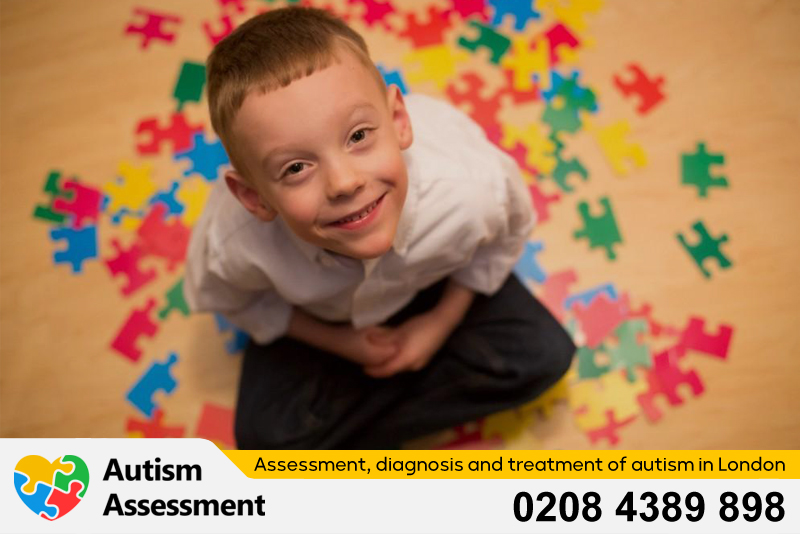
Autism discrimination examples
Autism Spectrum Disorder (ASD) is a developmental condition that affects communication, behavior, and social interactions in various ways. Despite growing awareness, individuals with autism still face significant discrimination and stigma, particularly in the workplace and educational settings. This blog post aims to shed light on examples of autism discrimination, its impact, and strategies to combat it.
Workplace Discrimination
In the workplace, autism discrimination can manifest in several ways. For instance, qualified individuals with autism may be passed over for employment due to misconceptions about their abilities. Even when hired, they may face a lack of understanding from employers and colleagues, leading to inadequate support and unreasonable expectations. The U.S. Equal Employment Opportunity Commission (EEOC) defines discrimination as treating someone differently or less favorably for a specific reason, such as a disability.
Statistics reveal that individuals with ASD experience higher rates of unemployment or underemployment. This is not due to a lack of capability but often results from negative reactions to the behavioral, social, and communication traits associated with ASD. It’s crucial for employers to recognize the strengths and potential of autistic employees, who can be exceptionally productive when matched with suitable roles.
Educational Discrimination
In educational settings, autistic pupils may face direct discrimination if they are treated less favorably than non-autistic pupils because of their autism. An example of this would be excluding an autistic child from a school trip solely based on their condition, which constitutes direct discrimination.
Systemic Issues
Discrimination against autistic individuals can also be systemic. For example, certain research funding policies may inadvertently exclude autistic populations, impacting the availability of resources and support for this group. Early career researchers may feel pressured to alter their research focus away from autism to secure funding, further marginalizing the condition in scientific studies.
Combating Discrimination
To combat autism discrimination, it is essential to promote inclusive practices and policies. Employers can make reasonable adjustments to accommodate the needs of autistic employees, such as providing clear communication, structured routines, and sensory-friendly environments. Awareness training for staff can also help create a more understanding and supportive workplace culture.
In educational institutions, enforcing anti-discrimination laws and policies is vital. Schools should ensure that all students, regardless of their neurodiversity, have equal access to educational opportunities and extracurricular activities.
Autism discrimination is a pressing issue that requires attention and action from all sectors of society. By understanding the forms it can take and implementing strategies to address it, we can create a more equitable and inclusive environment for individuals with autism. It is not only a legal obligation but a moral imperative to support the rights and dignity of every person, celebrating the diversity and unique contributions of those on the autism spectrum.

Outline the following models in relation to identifying autism
Autism Spectrum Disorder (ASD) is a complex neurodevelopmental condition characterized by challenges in social interaction, communication, and restricted or repetitive behaviors. Identifying ASD can be intricate, as it encompasses a wide range of symptoms and skills. Over the years, various models have been developed to understand and identify autism more effectively. This blog post will outline some of the prominent models related to the identification of autism.
Theory of Mind Hypothesis
The Theory of Mind (ToM) hypothesis suggests that individuals with autism have difficulty understanding that other people have their own thoughts, feelings, and perspectives, which are different from their own. This model posits that the core issue in autism is a deficit in ToM, which affects social interactions and communication.
Executive Dysfunction Hypothesis
This hypothesis proposes that autism is associated with difficulties in executive functions, which are cognitive processes that include planning, working memory, attention, problem-solving, verbal reasoning, inhibition, mental flexibility, multi-tasking, and initiation and monitoring of actions. The Executive Dysfunction hypothesis argues that these challenges contribute to the symptoms of ASD.
Weak Central Coherence Theory
Weak Central Coherence theory focuses on the tendency of individuals with autism to focus on details rather than the overall picture. This cognitive style can lead to exceptional abilities in specific areas but also contributes to the difficulties in generalizing and integrating information, which are common in autism.
The Diametric Mind Theory
The Diametric Mind theory, also known as the imprinted brain theory, suggests that autism and psychosis are at opposite ends of a cognitive spectrum. It posits that autism is associated with a mechanistic understanding of the world and a limited ability to interpret others’ intentions, while psychosis involves an overinterpretation of intentions, leading to paranoia and delusion.
The Extreme Male Brain Theory
Developed by psychologist Simon Baron-Cohen, the Extreme Male Brain theory is based on the observation that autism is diagnosed more frequently in males. It suggests that autism represents an exaggeration of male cognitive patterns, particularly in systemizing, which is the drive to analyze or construct systems, and a deficit in empathizing, which is the ability to recognize and respond to the thoughts and feelings of others.
Kanner, Asperger, and Wing & Gould Models
These models refer to the early descriptions and classifications of autism. Kanner’s and Asperger’s models were some of the first to describe autism as a distinct condition. Wing & Gould introduced the concept of the autism spectrum and emphasized the importance of social impairments as a key feature of the condition.
Machine Learning Classification Models
With advancements in technology, machine learning models have been employed to assist in the identification of ASD. These models use algorithms to analyze data and identify patterns that may indicate the presence of ASD. They are particularly useful in processing large amounts of data and can help in early detection and diagnosis.
Screening Tools
Several screening tools have been developed to detect ASD in children, such as the Autism Spectrum Quotient (AQ), Childhood Autism Rating Scale (CARS-2), and Screening Tool for Autism in Toddlers and Young Children (STAT). These tools are designed to be administered by professionals and can provide valuable information for the diagnostic process.
Understanding these models is crucial for professionals working in the field of autism, as they provide frameworks for identifying and assessing ASD. It is important to note that no single model can fully explain the complexities of autism, and often a combination of approaches is necessary to understand each individual’s unique profile.


